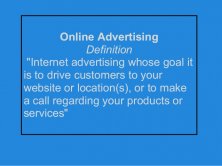Marketers are aggressively challenging media companies to prove the online ads they sell actually appear on users’ screens, as opposed to parts of web pages people never see.
To most people across the industry the concept of buying and selling “viewable” ads instead of “served” ones makes complete sense. The problem is, nobody can seem to agree what “viewable” actually means.
In an attempt to set standards the Media Rating Council last year issued viewable ad measurement “guidelines” it created with input from the Interactive Advertising Bureau. Some major ad sellers and buyers disagreed with the MRC’s definitions, however, and opted instead to use their own. Here’s a summary of the state of play:
Media Ratings Council / Interactive Advertising Bureau
As far as the MRC and the IAB are concerned, a display ad is viewable if 50% or more of its pixels appear on-screen for at least one continuous second. A video ad is deemed viewable if 50% of its pixels appear on-screen for at least 2 consecutive seconds.
GroupM
GroupM considered the MRC/IAB viewability definitions inadequate, so the agency group got together with its clients and instead designed its own standards, according to its chief digital investment officer, Ari Bluman.
For display ads that standard is 100% of pixels in view for at least 1 second. For video, GroupM considers an ad viewable if 100% of it is in view for at least 50% of the duration of the ad, but also expects audio to be on and for the video play to be actively initiated by a user.
Those criteria are are far more stringent than the MRC’s.
Facebook
Facebook says it only charges marketers for “viewable” ads, but that’s according to its own definition of the term. The social network considers an ad viewable the instant it appears on a user’s screen, regardless of how many pixels are in view or for how long. That doesn’t meet GroupM’s requirements for multiple reasons, and it doesn’t meet the MRC /IAB definition either.
However, Facebook will soon give marketers an option to pay only if entire ad units appear on users’ screens, according to a person familiar with the company’s plans. Using the new buying feature, an advertiser would not be charged if a user only scrolls far enough to view 20% or even 90% of an ad, although they may be charged a premium to use it. Facebook also lets advertisers pay for video ads only when they’ve been viewed for 10 seconds, if they wish.
According to Facebook, the MRC’s definitions shouldn’t apply to feed-based services such as its own. “The MRC standard was designed for desktop impressions operating in an IAB ad format kind of way, as opposed to in an in-stream or mobile experience, ” Facebook’s vice president of marketing science, Brad Smallwood, told CMO Today in February. The social network is still working with the MRC on accreditation of how it’s counting impressions.
Twitter
Twitter charges marketers for promoted tweets — its version of display ads — on a cost-per-action basis as opposed to an impression-based one. As a result, it argues viewability isn’t an important consideration for its advertisers since they only pay if and when a user takes a specific action such as installing an app.
It’s a different story when it comes to video ads on Twitter, however. In June the company began rolling out autoplay videos across its service, and said it would begin charging marketers only when a video ad is 100% in-view for at least 3 seconds. That threshold satisfies the MRC/IAB guidelines, but doesn’t meet GroupM’s stated requirements.











